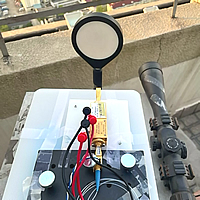
Experimental demonstration of 220-GHz terahertz signals wireless transmission over 4.6 km
Wei Y, Yu J J, Wang M X, et al
Sci China Inf Sci, 2025, 68(1): 114301
The advancement of terahertz (THz) communication technology drives the evolution of wireless communication systems, offering novel pathways and technical means for the development of future 6G communication systems. Traditional wireless communication systems are often constrained by bandwidth limitations of electronic devices in high frequency bands. However, THz communication technology leverages the characteristics of electromagnetic waves to transcend these limitations, enabling communication at higher frequencies and wider bandwidths. Among these, the 100-300 GHz (sub-)THz frequency range stands out due to its relatively low atmospheric attenuation and ample system bandwidth, making it more suitable for establishing long distance point-to-point wireless links. Especially for long-distance transmission in high-frequency bands, the 220-GHz band has emerged as a new research hotspot for wireless transmission. Currently, 220-GHz frequency band wireless links are mainly classified into three categories: allelectronic, photonic-electronic, and all-optical systems. In all-electronic systems, THz signals are generated using electronic frequency multipliers at the transmitter and downconverted using electronic mixers at the receiver.